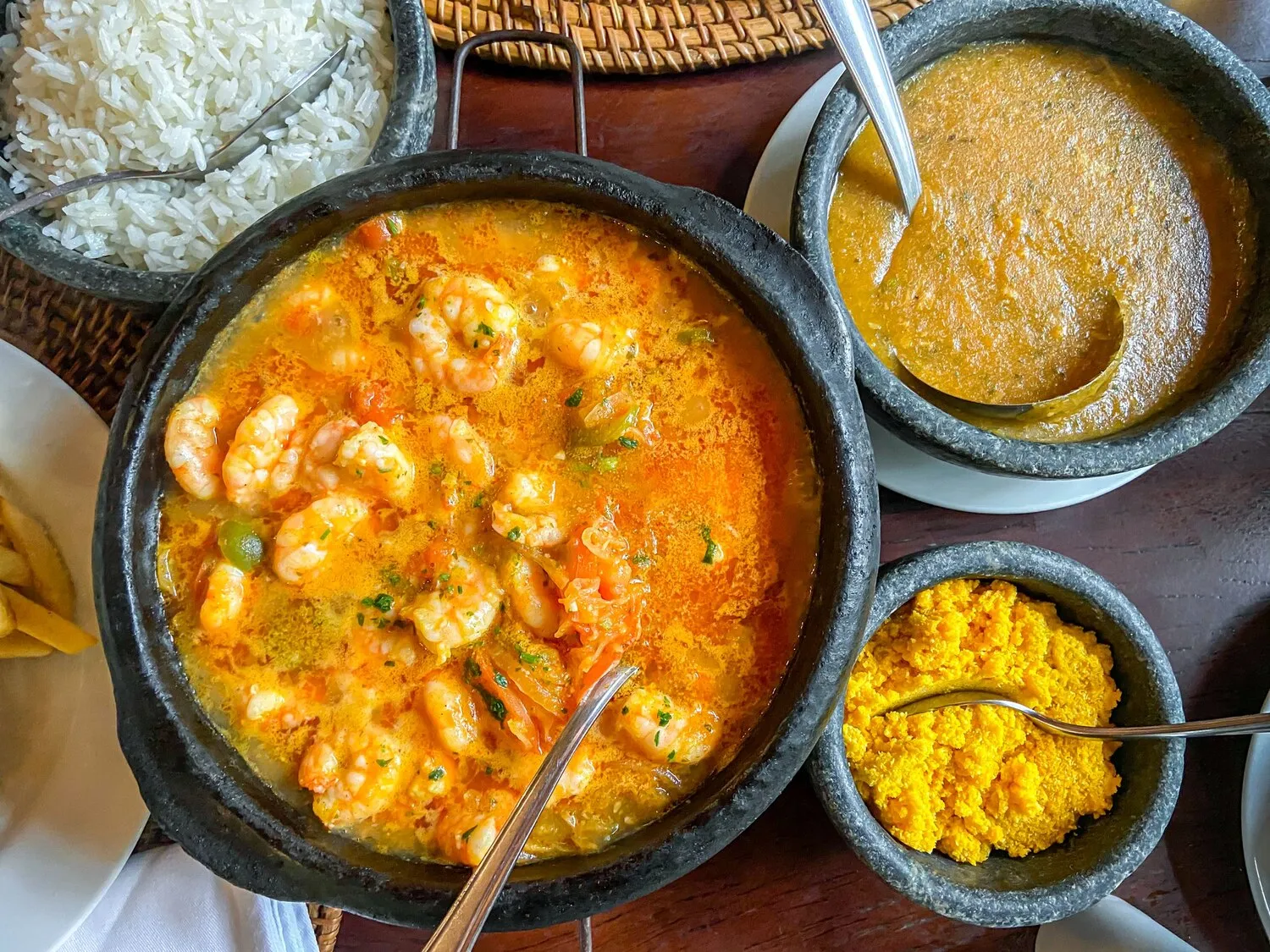
Moqueca de Frutos do Mar
Seafood moqueca, a typical Brazilian stew, usually featuring a variety of seafood in a flavorful coconut milk-based broth.
Nutrition Facts
* The % Daily Value (DV) tells you how much a nutrient in a serving of food contributes to a daily diet. 2,000 calories a day is used for general nutrition advice.
Madame Bardot Restaurante
Moqueca's origins trace back to indigenous Brazilian cooking techniques, combined with influences from Portuguese colonization and African culinary traditions. Indigenous people used clay pots to cook fish with various vegetables. The Portuguese introduced olive oil, onions, and garlic, while African slaves added ingredients like coconut milk and palm oil (dendê), shaping the dish into its current form.
Moqueca is more than just a dish; it's a symbol of Brazilian coastal culture, community, and celebration, deeply intertwined with family traditions and regional identity.
Regional Variations
Different regions of Brazil boast their own unique versions of Moqueca. The two main types are Moqueca Capixaba (from Espírito Santo), which uses olive oil and annatto seeds for color, and Moqueca Baiana (from Bahia), which includes dendê oil (palm oil) and coconut milk.
Family Gatherings
Moqueca is often prepared for special occasions and family gatherings, symbolizing togetherness and shared enjoyment. It's traditionally served in the same clay pot it was cooked in, emphasizing its rustic and communal nature.
Coastal Identity
Moqueca represents the strong connection Brazilians have with their coastline and the bounty of the sea. It embodies the fresh, vibrant flavors of the ocean and is a source of regional pride.
Moqueca is a celebration of seafood flavors enhanced by the creamy richness of coconut milk and the vibrant aroma of fresh herbs and spices.
The dominant flavor is seafood, usually a mix of shrimp, fish (often white fish like grouper or snapper), mussels, and clams. Coconut milk provides a sweet and creamy base, balanced by the acidity of tomatoes and the pungency of onions, garlic, and bell peppers. Cilantro and lime juice add brightness and freshness. In some variations, dendê oil (palm oil) lends a distinctive earthy and slightly smoky flavor, along with a vibrant orange hue.
Freshness is Key
Use the freshest seafood available. The quality of the seafood will significantly impact the overall flavor of the dish.
Gentle Cooking
Avoid overcooking the seafood. Cook it gently in the sauce until just cooked through to maintain its tenderness and prevent it from becoming rubbery.
Layering Flavors
Build the flavors gradually. Sauté the aromatics (onions, garlic, bell peppers) first to develop their sweetness before adding the tomatoes and seafood.
Clay Pot Advantage
If possible, cook Moqueca in a traditional clay pot. Clay pots distribute heat evenly and impart a unique earthy flavor to the dish.
Explore additional Stew dishes and restaurants
Explore StewDiscover top dining spots and culinary experiences in Armação dos Búzios.
Explore Armação dos BúziosLearn more about the food culture, restaurant scene, and culinary heritage of Brazil.
Explore Brazil